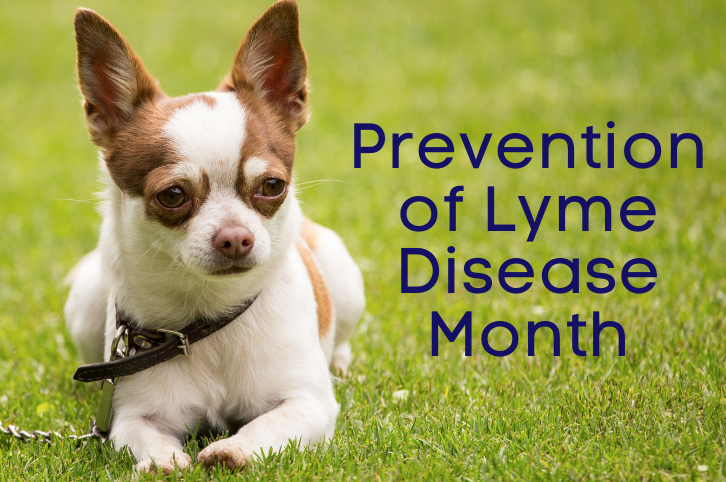The website lymedisease.org, has designated the month of May as Lyme Disease Awareness Month to draw attention to how the disease affects people and pets. According to the Centers for Disease Control (CDC), the prevalence of Lyme disease in both people and pets is growing each year. The CDC also states that Lyme disease is the leading vector-borne illness across the United States.
How Lyme Disease Affects Pets
Dogs and cats can easily acquire Lyme disease when an infected tick attaches itself to the animal’s fur and releases bacteria into the bloodstream. Animals also have an increased risk of developing the following vector-borne illnesses from an infected tick:
- Anaplasma
- Bartonella
- Babesia
- Ehrlichia
- Rocky Mountain Spotted Fever
- Tick paralysis
Unfortunately, Lyme disease can cause kidney failure and other serious complications such as seizures if left untreated. Some pets even die from Lyme disease.
Dogs acquire Lyme disease more often than cats because they spend more time outdoors exploring wooded environments and grassy areas that naturally attract ticks. Cats who spend time outdoors can also get Lyme disease just by lying on the lawn. Here are some common symptoms of Lyme disease to look for if you are concerned your dog or cat could have it:
- Exercise intolerance
- Fever
- Increased fatigue
- Increased thirst
- Increased urine output
- Loss of appetite
- Mobility challenges such as limping and shifting weight between limbs
- Pain when sitting down
- Vomiting
- Diarrhea
While these symptoms do not always indicate Lyme disease, it is best to confirm or rule out a diagnosis as soon as possible. We typically prescribe antibiotics for pets with Lyme disease at Cloquet Animal Hospital, but your pet could need other interventions as well.
Best Practices for Preventing Lyme Disease
The CDC recommends that people check their pets for ticks daily when they come in from spending time outdoors. Be sure to feel for ticks with your hands in all these areas:
- Around the eyelids and tail
- Between the back legs and toes
- In and around the ears
- Under the front legs and collar
If you see or feel a tick, locate a pair of fine-tipped tweezers to pull it off your pet’s skin right away. Make sure you have a firm grip on the tick’s body and pull upwards with steady and even pressure. Avoid the temptation to twist the tick as you pull since this could cause parts of its body to break and remain lodged in your pet’s skin.
After removing the tick, clean the bite area on your pet and wash your hands thoroughly with soap and hot water. Drop the tick in alcohol and place in a bag to dispose or flush it down the toilet.
Be sure to keep the grass in your yard cut short and bushes neatly trimmed. You should also not allow wood to pile up because it gives ticks another place to hide.
All pets who spend time outside should wear a flea and tick collar and use another type of preventive. Topical applications or chewables to prevent fleas, ticks, and heartworm are especially useful. Getting your pet vaccinated for Lyme disease is one of the best preventive measures available. Please schedule an appointment with Cloquet Animal Hospital for a vaccine or to discuss options of parasite prevention for your pet.
Photo Credit: Pexels

